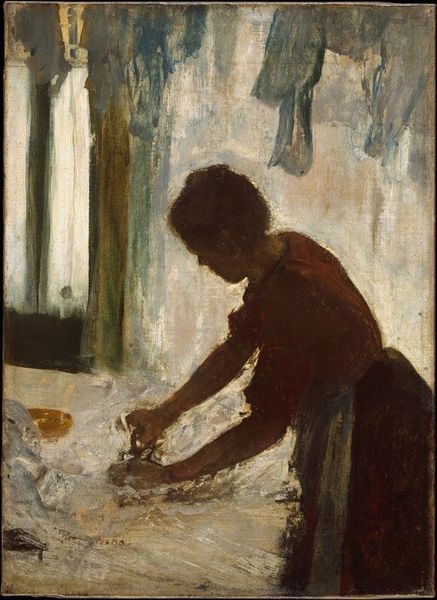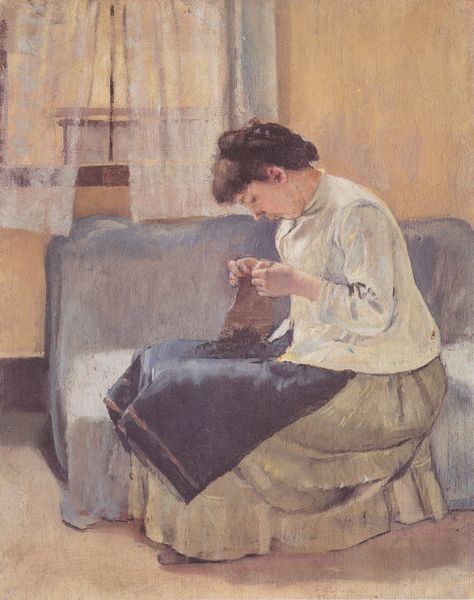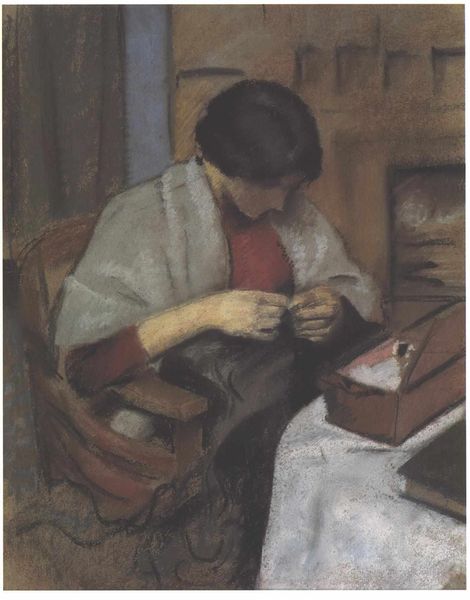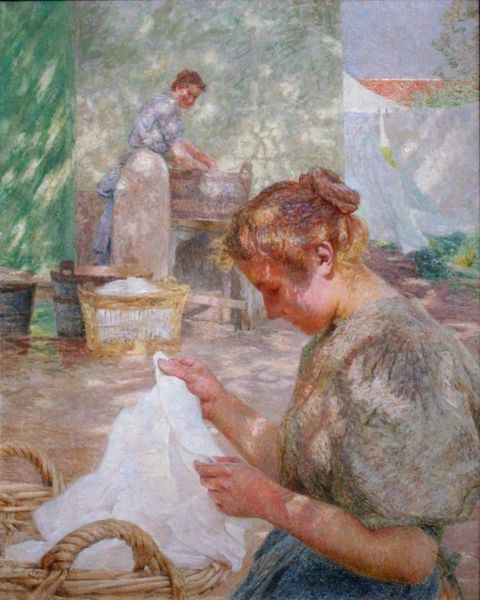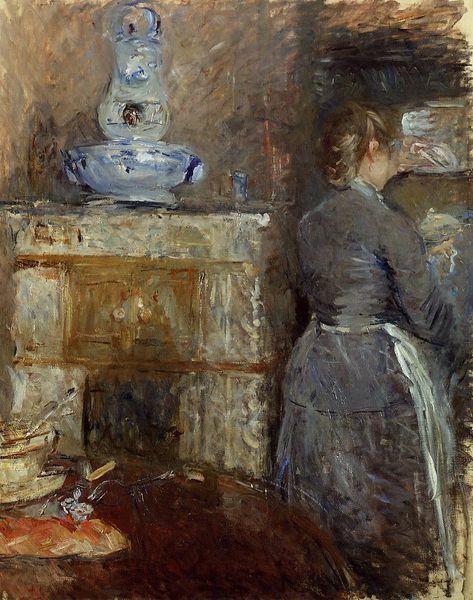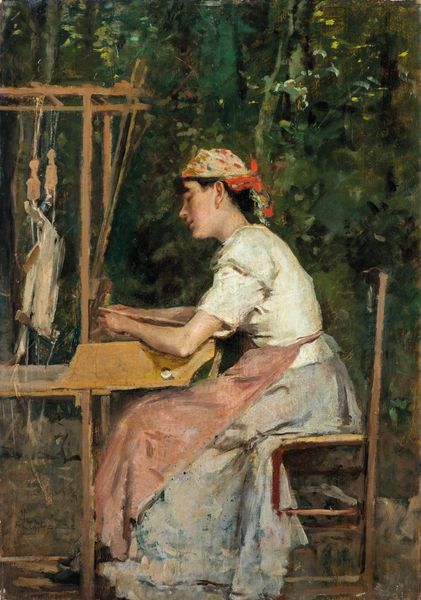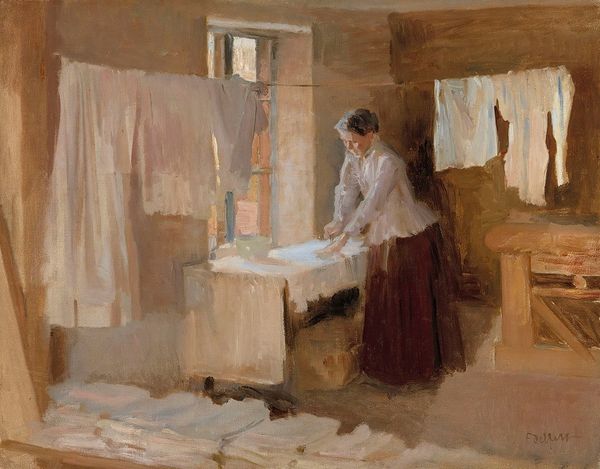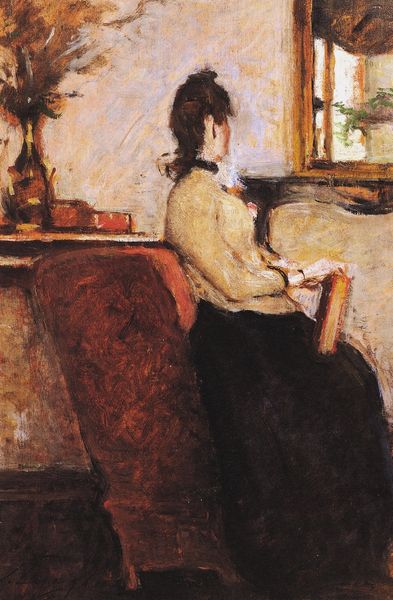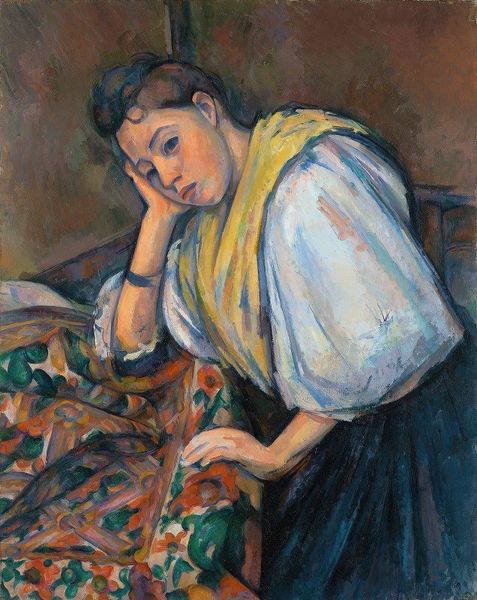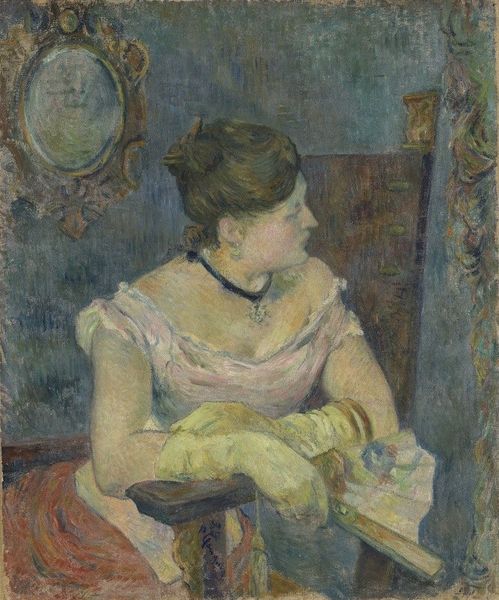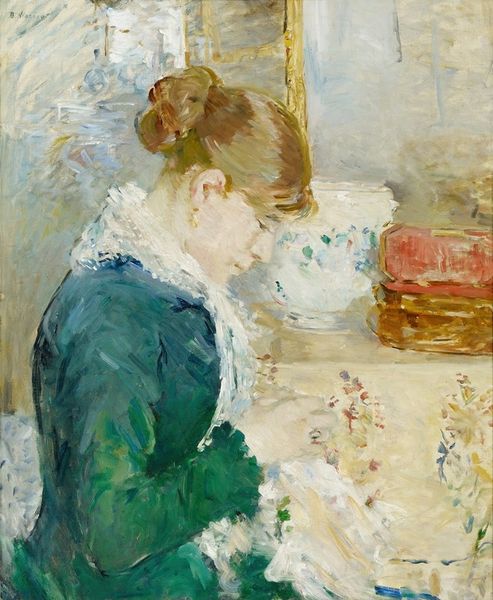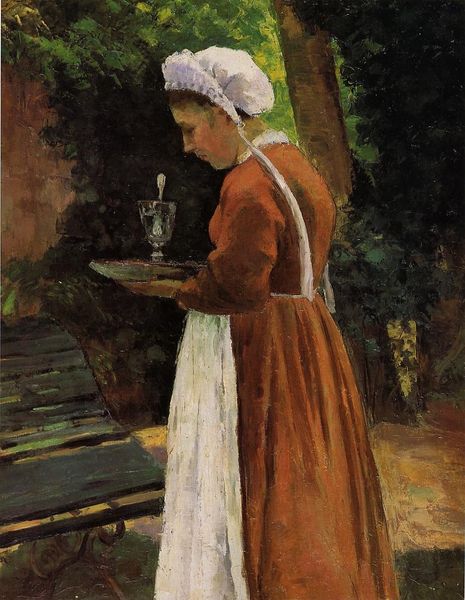
painting, oil-paint
#
portrait
#
painting
#
impressionism
#
impressionist painting style
#
oil-paint
#
figuration
#
oil painting
#
underpainting
#
france
#
painterly
#
genre-painting
#
fine art portrait
#
realism
Copyright: Public domain
Curator: Edgar Degas's "Woman Ironing," created in 1887, presents a focused depiction of labor. Oil on canvas, it encapsulates a moment of intimate realism. Editor: There’s a melancholic pall cast over the scene, isn’t there? The muted tones, the almost stooped posture of the woman… it speaks of weariness. Curator: Observe how Degas renders the planes. The severe angles of the ironing board create a sharp foreground against the indistinct, blurred backdrop. This contrast foregrounds the subject as much of the subject matter is slightly out of focus. Editor: I am curious about Degas's intentions when choosing to capture such a mundane subject. Ironing wasn't traditionally elevated in art. Curator: In his selection of subject, we can infer a social commentary, can’t we? He highlights a segment of the workforce that was largely ignored in fine art circles: working women in Paris. Editor: But he isn't overtly sentimental or agitational. I mean, there’s a certain respect, perhaps, in the way he paints. It's matter-of-fact. She is faceless, or at least her face is barely seen. We have to see labor as this activity and part of her persona, almost the sole activity she represents. Curator: Precisely, it is that impassivity which lends the painting its profound character. Notice how he utilizes the layering of light, playing on the creases in the fabrics. The underpainting seems intentional, creating texture. Editor: And what do you make of those other articles of clothing looming over her in the background? Are they simply visual devices to deepen the picture plane or something more metaphorical? Curator: A brilliant consideration! It suggests both a space—an interior, a workplace—and hints at the cyclical nature of such work. The clothes also, by being blurry, intensify our focus on the woman. Editor: Considering that Paris was becoming the fashion capital, I think a statement on the hidden, grueling work required is at the core of the theme of this painting. Curator: Degas forces a confrontation with daily labor, which has socio-economic implications to be sure, but as much can also be admired and pondered merely as compositional design. Editor: Ultimately, a work that captures the subtlety and weight of everyday life, prompting viewers to reflect on the individuals behind often unseen labor. Curator: I concur. Degas's commitment to capturing overlooked elements gives "Woman Ironing" its complex staying power.
Comments
No comments
Be the first to comment and join the conversation on the ultimate creative platform.

